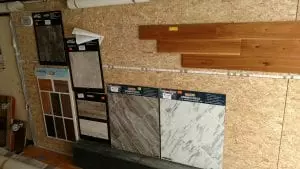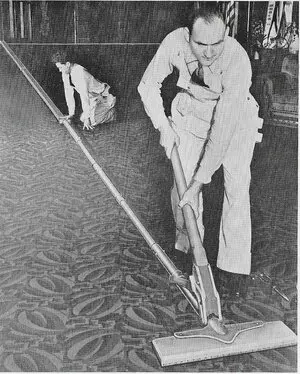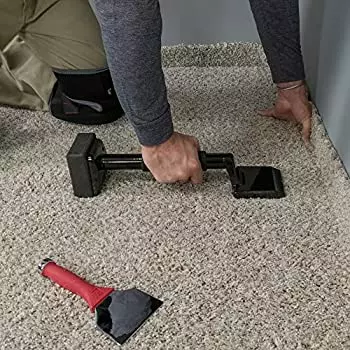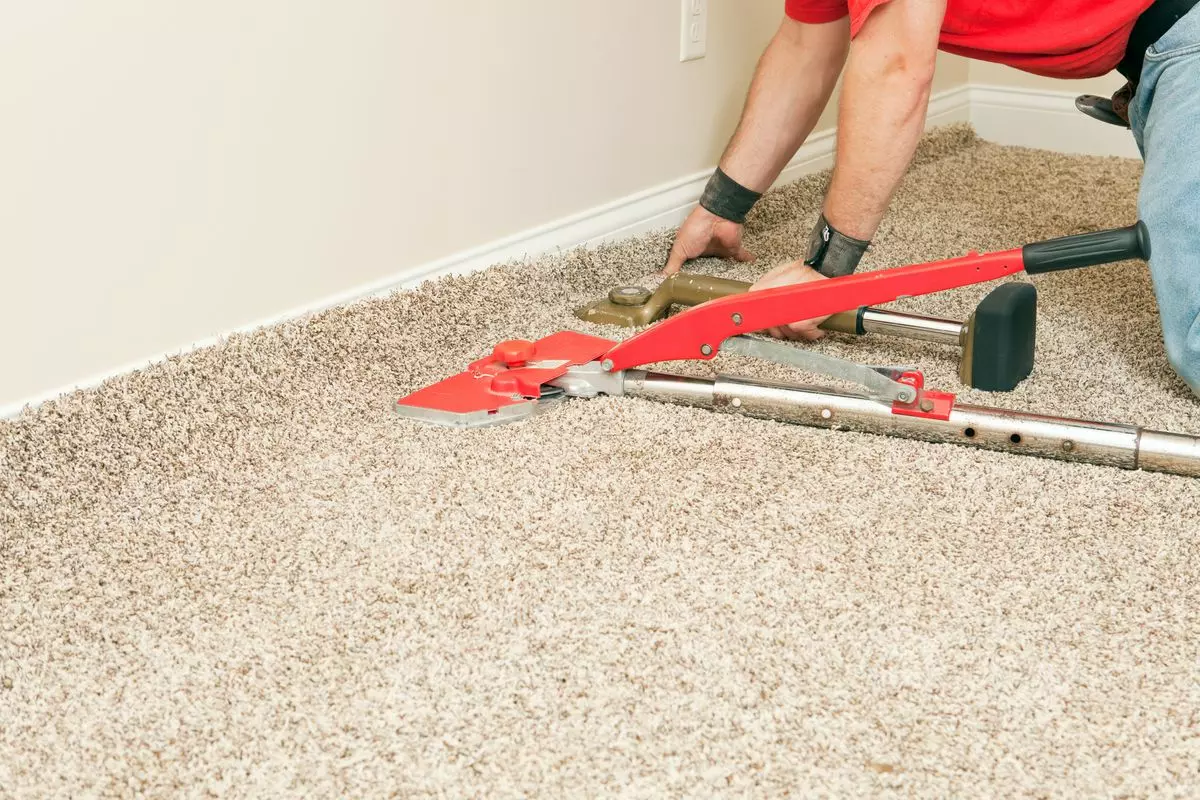In this post, we will cover the main differences between hardwood, laminate, and luxury vinyl plank (luxury vinyl tile also falls into this.)
The Differences Between Hardwood, Laminate, and Luxury Vinyl Plank
LVT-LVP-Laminate-Hardwood-Display-LaValle-Flooring-2017
Hardwood, laminate, and vinyl may all look like wood, but they couldn’t be more different.
One of the most common things to happen at LaValle Flooring is almost daily requests by our potential clients for “waterproof” flooring or “laminate hardwood.” Typically, we ask people a few questions about what their home environment is like. We follow with what they expect from their floor. After that we can figure out what our clients are after. Some clients have pets or kids, so a waterproof luxury vinyl plank option may be best for them. Others may want the look and feel of hardwood without the cost, so a laminate may be best. And lastly, real hardwood helps a home’s resale value.
So what’s the biggest difference?
The main differences will be product construction, durability, and what it can do for your home’s resale value. As of 2021, most homes are having some version of vinyl plank installed. So we will start describing the that particular product.
Luxury Vinyl Plank (Luxury Vinyl Tile)
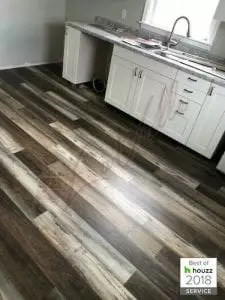
Southwind Harbor Plank MAYFLOWER Waterproof Hardwood Laminate Vinyl Flooring Installation Jamestown North Dakota
Without getting off track, the term Luxury Vinyl Plank and Luxury Vinyl Tile cover a range of products. Most, if not all, are waterproof. They include 100% virgin vinyl, WPC, and SPC products. Some are glued, some are “clicked” together, and others are known are “loose lay”, which require neither glue nor clicking. There are a variety of special coatings put on top of the wear layer, which is typically between 12 and 20 mils. Finally, the quality AND quantity of images contribute to the cost of the product.
Construction:
Vinyl planks have multiple types of construction. Some are Stone Plastic Composite (SPC.) Others are Wood Plastic Composite (WPC.) This helps keep the planks from shrinking or expanding. This is important if you plan on doing large projects. If your project area is bigger than 30′ in any direction, WPC or SPC are a good option. A third option is virgin vinyl. However, we tend to only recommend virgin vinyl for glue down installs. Two good examples are Cali Vinyl Pro Classic or Southwind Harbor Plank. Cali Vinyl Pro is a SPC. Southwind Harbor Plank is a WPC.
Installation:
Some planks are clicked together. Others are glued down. The third, and newest variety, are loose laid. Loose Lay means the planks don’t require glue nor clicking. These loose lay planks use the weight of the plank to hold them in place. Also, they tend to have a special non skid backing to keep from moving. Most homeowners prefer click together planks. Probably because it doesn’t require adhesive which can get messy if you don’t have experience.
Loose lay and Glue Down require additional prep. That is not to say that click together planks don’t require prep. All these planks require flat surfaces. Glue down planks require extra prep since they’re glue directly onto the floor. Click Planks are also known as floating floors. This means they can float over slight imperfections that would show up in glue down installs. A good example of a loose lay plank is Southwind’s Loose Lay Plank.
Wear Layer:
Vinyl products are typically judged by their wear layers. These are measured in mils, NOT mm. The wear layer is the top layer of the plank, where the wood or stone image are printed. These are often protected with a special coating. These coatings are usually aluminum oxide or ceramic bead. For most homes, a wear layer of 12 mils is enough. Most of our planks have a 20 mils wear layer. 20 mils is considered commercial. Most apartments typically use 6 mil products.
Visuals:
Visuals for vinyl planks (or tile) are all over the place. They can be low quality images for low quality goods. Super high definition images are common for middle grade and better vinyl planks. In addition to the image quality, the number of images also matters. Some planks have a low image repeat count. This means you will see the same image on a plank more often. Better grades of plank use more plank images, such as Cali Vinyl Pro Mesquite. Higher image counts make the product look more real. Note: thicker wear layers sometimes affect image quality.
Luxury Vinyl Plank Summary: There are many factors to consider when looking at Vinyl Planks. Best suited for busy homes with lots of spills.
Laminate
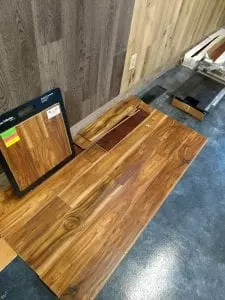
It feels like we’re going back through time. If Vinyl planks are the newest type of flooring, laminate comes before them. Laminate flooring is pretty straight forward. It is usually made of high or medium density fiberboard (HDF or MDF.) They used to be damaged easily by water. Most could only be installed, at maximum, in areas no bigger than 30′ in any direction. Laminate flooring is great for people wanting to flip a home. That is not to say they aren’t great for homeowners. Older laminates weren’t waterproof. Many new laminates are at least water resistant.
Construction:
Laminates are usually made of MDF or HDF. Those are different types of fiberboard. Many come with attached underlayment. The construction of laminate usually requires it be put in a room before install. This is known as acclimatization. This helps get the new laminate used to the temperature and humidity of the room.
Installation:
Most laminates are clicked together for installation. Few are drop locks. The oldest versions used to get glued together at the joints. A good example is Wilsonart laminate. Laminates are slightly more difficult to install than vinyl planks. This is due to their reduced flexibility. They also require a cutter of some kind.
Wear Layer:
Laminates DO NOT have a wear layer. Their durability is measured with the AC scale. For most homes, an AC3 rating is the lowest you’ll want. Higher end laminates have an AC5 rating. Laminates on average have better scratch resistance than vinyl planks.
Visuals:
The visuals in laminate vary greatly. The main difference is that mils don’t affect image quality. Aside from that, the same that applies to vinyl planks applies to laminate.
Summary: Laminate is a great option. Attention should be paid to intended use. May not hold up well in wet environments.
Hardwood
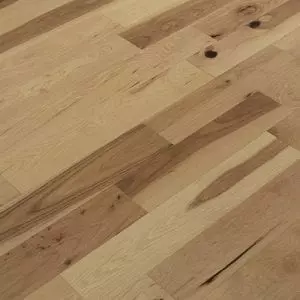
Hardwood is one of the oldest flooring materials. They are older than laminate or vinyl by thousands of years. Hardwood is a natural and renewable product. It can be refinished several times. This means it’s more affordable in the long run. In addition, hardwood also adds value to your home.
Construction:
Hardwood has to main types. It can be solid or engineered. Cheaper engineered hardwoods are very difficult to refinish. This is because the veneer layer is thinner. Higher quality engineered and solid hardwoods can be refinished. Engineered can go into more areas than solid. This is because solid can’t tolerate high humidity or temperature changes. Another aspect in construction is the thickness of the plank.
Installation:
Hardwoods can be clicked together, glued, or nailed down. Gluing hardwood can be done in two ways. Either by gluing the hardwood at the tongue and groove. Or they can be glued to the floor as full spread.
Veneer:
Instead of an AC rating or wear layer, hardwood has veneers. This only applies to engineered hardwoods. For all hardwoods, they have special coatings. These are aluminum oxide or oil. The former offers more protection. The latter offers little protection but looks more beautiful.
Visuals:
Because it’s a natural product, hardwood has endless visuals. There are no concerns about plank image repeat. They can be stained any color. They can be cut in various shapes and sizes. Hardwood seems to only have two limitations when it comes to visuals. The imagination of the owner/ designer, since the possibilities are endless. The second limitation is the skill of the installer. This means more complex projects require higher levels of skill. This means more money for installation.
Summary: Hardwood is great for resale value. It’s also the most durable and green option since it can be refinished.
We hope we helped explain some of the many differences between hardwood, laminate, and vinyl planks. If you have any questions, please feel free to contact us. As always, for your installation, we recommend using a professional installer.
[contact-form to=”[email protected]” subject=”Hardwood – Laminate – Vinyl Inquiry”][contact-field label=”Name” type=”name” required=”1″][contact-field label=”Email” type=”email” required=”1″][contact-field label=”Website” type=”url”][contact-field label=”Message” type=”textarea”][/contact-form]
